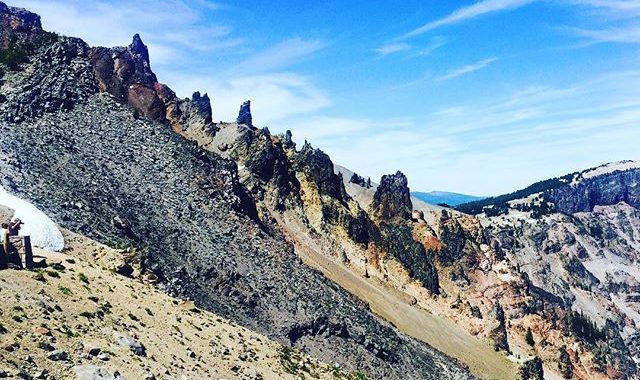Pumpkin on the Pacific, a Teacher’s Tale of Thru-Hiking in the USA
Thru-hiking is monumentally hard for everyone, but walking alone and being forced to befriend strangers was the hardest and the best thing about nearly five weeks on the Pacific Crest Trail, according to teacher Laura Hjelmeland. 
Here Ms Hjelmeland, aka Pumpkin, talks to students Alice Zhang and Bakhita Fung about her epic USA walking adventure in the summer of 2016.
What was your inspiration to take on this challenge?
I read a book, about ten years ago, called The High Adventure written by Eric Ryback. I became interested in long distance hiking and thru-hiking (hiking a long distance trail, end to end). He wrote the book in the 1970s, and he was the first person to do the whole of the Pacific Crest Trail as a thru-hike at 17, with a 37 kilo backpack – an impressive feat. He was the first American to hike the whole of the Pacific Crest Trail, the whole of the Continental Divide, and the whole of the Appalachian Trail.
What other experience did you have before taking on the Pacific Crest Trail?
I’ve had quite a bit of hiking experience, but less mountaineering experience or backpacking experience, so that was challenging. I’ve hiked quite a bit across the US, Asia, and the Rainbow Trek every year. It’s a good kind of training, but I virtually had no backpacking experience and absolutely no mountaineering experience, which was challenging.
How did you overcome your lack of mountaineering and backpacking experience, since it was your first time being thrown into such an environment?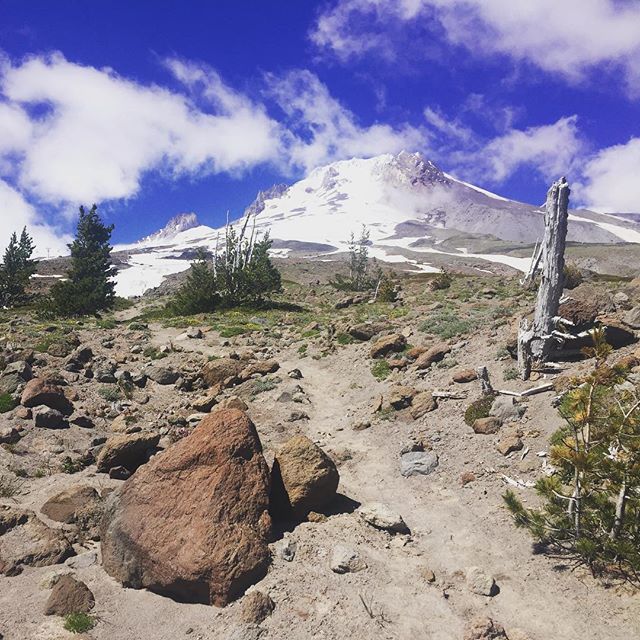
I read the book (The High Adventure) ten years ago and I became really interested, but I realised that I wasn’t fit enough physically to do myself, so I recruited Ms Astridge (former-Island School teacher) to go along with me, but she got two days into the hike, and had to go home suddenly. I think that was the biggest challenge I had to overcome was just realising that I was alone out in the wilderness, without a support system. You’re relying on strangers, on the goodwill of others to get through.
How were the first few days of your journey?
Challenging. The first day, we hiked ten miles, and we started off midday. I remember being out in the midday heat, with a really heavy pack (at the time I thought it was heavy). After ten miles, I remember thinking about how I’d ever hike 300-400 more miles. It was also so quiet, so different from Hong Kong. We had flown from Hong Kong to San Francisco, and spent two days to adjust, but we got on the trail still jetlagged. I wasn’t used to being in such as quiet environment – I was used to being at school and being around a lot of people.
During the journey, how did you get used to the terrain?
That was difficult too. In Oregon, the terrain changes, and it changes quickly, even in one day. So at the 7th or 8th day at Mt. Thielsen – so by this time I had met some other hikers. They were two women, teachers as well. One was a special needs teacher, so we had quite a bit in common. When we were leaving Crater Lake (dusty trail with a lot of rock), we headed straight through a forest with mosquitos everywhere – so many mosquitos that we had to wear our mosquito tents because the mosquitos were swarming us. Whilst walking through the forest, we suddenly came upon Mt. Thielsen, a huge mountain with snow chest-deep. We went from a hot, mosquito-infested forest, to being in a snowland. The terrain changed so quickly, and it was very hard to prepare for.
What was the most unexpected setback that you faced during the trip?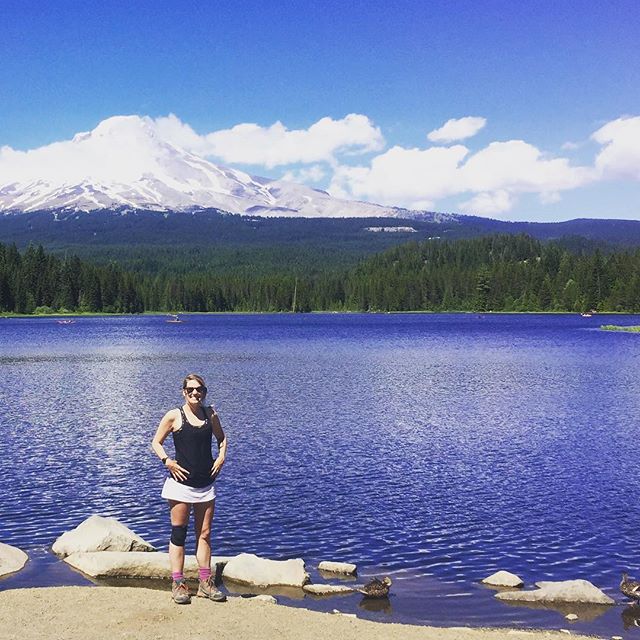
We encountered a cougar. I was hiking with the two women and we hadn’t showered in 15 days. In the middle of a forest area, we saw a shadow. It almost looked like a tail, and by that point we had been hiking for about seven hours, so we thought we were just seeing things. So we continued hiking, and one of the women said ‘I think it’s a cougar’. The other two hikers I was with were from Oregon, so they were familiar with wildlife, and as we got closer, we saw that it was a cougar… We kept walking and questioning our safety: should we carry on or go back?
Soon enough, we actually ran into a ranger. We explained to the ranger that we thought we saw a cougar and that we had been seeing it for the last hour or so. It was just pacing around in the distance. He told us that it was really dangerous to see a cougar because it meant it was stalking you. So he suggested us to get off the trail immediately, take a shower, (because we obviously stank and the cougar was tracking our scent) and burn our clothes. He asked us, “Have you got a knife?”
I took out a flimsy plastic knife. The ranger, “That’s not what I meant, have you got a knife?!”
The ranger recommended us to purchase a large butcher’s knife or a camping knife to keep in our pockets, so if a cougar came up behind us, we could quickly withdraw it from our pockets and stab it. This was unexpected, and set us back (we had to get off the trail), but we were happy to do it (at that point we were terrified).
On a more lighthearted note, what was your favorite meal during the journey?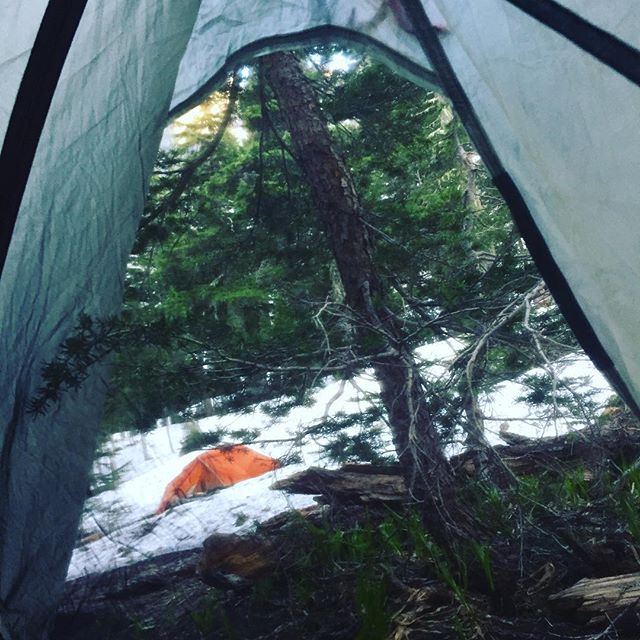
Since we were packing ultralight, all we had brought to eat was Clif Bars. We sent ourselves resupply boxes along the way, just full of Clif Bars, and ate about 8-10 clif bars a day – we had a wide variety like oatmeal and chocolate chip (blueberry was disgusting). I eventually got sick of Clif Bars and started trading on the trail for other food. The best trade I’ve ever made was when I traded two Clif Bars with a woman (sponsored by a potato company) for some Idaho garlic, pepperoni mashed potatoes – probably the best meal.
What did you learn about yourself during this journey?
I think you learn a lot just from being uncomfortable. In times when you’re out in the wilderness, the company of others is something really precious, so if I ever passed somebody (even if I felt uncomfortable at first), I would start a conversation with them, and even share a meal with them. It’s really lonely being alone. I learnt to be comfortable being uncomfortable and to push myself to be social, even with strangers.
What was the best part of your journey?
The days all ran together when I was hiking for about ten hours a day. I really started to appreciate the little things.
We (myself and two other ladies) had hiked an extra ten miles off the trail to get to Crescent Lake, and a family was having a reunion at the tent site beside us. We were sat there eating Clif Bars (that we’ve been eating for the last however-many-days and we were really lonely, sick of talking to each other). We saw the family there, which made us miss our friends and family.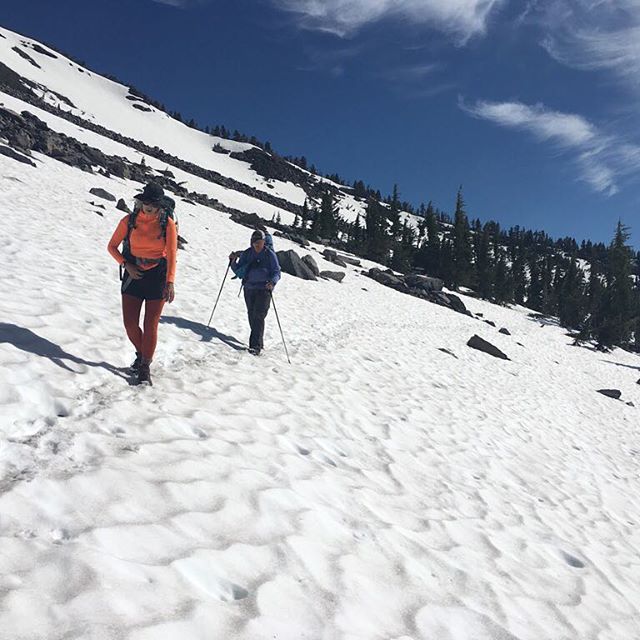
My best memory was when this family invited us over to spend the night. They took us into town to a grocery store and let us pick anything we wanted, which was a real treat. I remember picking the most random things like a strawberry milkshake, beef jerky, a hot dog and jalapeno Cheetos. And we just spent the night with them, playing guitars and singing around the campfire.
If you had the chance to go again, would you?
I would go again – just for a shorter period of time. We were out there for 26 days, hiking a total of 560 kilometres – a little bit long. If I were to do it again, I would go for a shorter (say 14) day trip, where the focus wasn’t so much just on hiking, but spending time with people and seeing the scenery. There were some days where I didn’t take a single picture – I was just thinking ‘only two more miles, only one more mile, half a mile’, etc. I would change the focus to be more about camping and spending time with people instead of just focusing on miles.
What advice would you have for anyone who is considering a journey like this?
Be prepared to change your plan. If you look at the statistics you’ll find that less than 20% of people that go on a thru-hike actually end up completing it. And we didn’t finish it, we went around 100 miles less than we had planned (due to unrealistic expectations, mental fatigue, physical injuries or sickness, or different family or life events.)
There are many reasons why people don’t make it, so my advice would be: You need to hike your own hike, don’t be afraid to change the plan. It’s not about miles, it’s about journeys. If you get hurt or you get sick, take care of yourself – that’s the first priority. Don’t push yourself to do something that’s going to have a long term implication on your health.
How did you deal with being put in those uncomfortable situations? For example, how did you deal with being lonely?
Before we went, we had talked about not bringing any books – we wanted to go ‘ultralight’ – no books, no luxury items. But once Ms Astridge left, I hiked
my own hike and I decided to change a few things. I traded Clif Bars and clothing for books, and that’s what really brought me through it. I also had my phone, so I could listen to podcasts. So every day I allowed myself to listen to three podcasts of This American Life. I also brought a pack of cards, so if I met some strangers and it was uncomfortable, or if English wasn’t their first language, we could at least play cards.
How many people did you meet on your journey?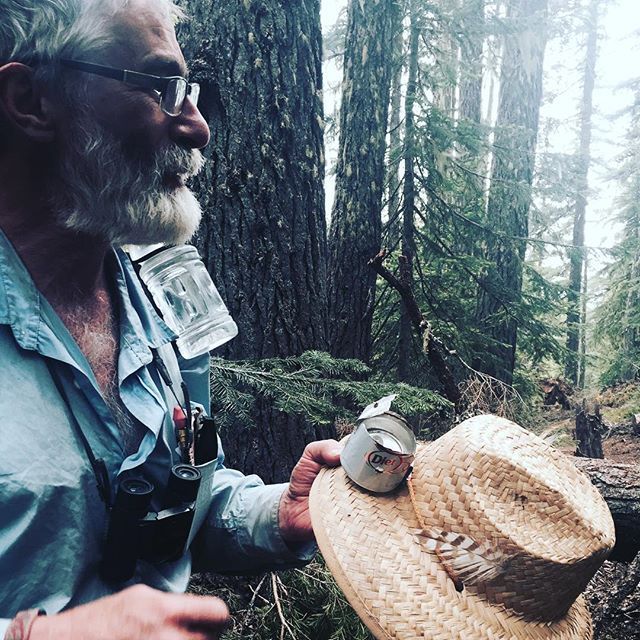
I’d say we met 50 people at least, because in some occasions we had to hitchhike, so we’d be on the road hitching and they’d drive us into town, and we’d maybe eat dinner with them or they’d take us to our next location. We met this older gentlemen in his 70s and he was hiking from Alaska. We met him at the right time. We were wearing our tents and getting eaten alive by bugs, until he taught us this trick to keep mosquitos away – he had fashioned this aluminum can on a hat. He cut it in half, and put a of coil in it, and he actually gave us one to use ourselves – it worked!
Were you moved by the goodwill of other people?
Yes – I was very surprised at their generosity. The day that Ms Astridge got sick, we had been hiking for 20 miles and upon arrival at our campsite, we realised we were at the wrong place. We sat there at the entrance, with our packs on, (five pm, ten hour hike) and a truck pulled up.
Inside it there were two senior citizens, with dogs at the back of their car (a mess). They invited us to get in the car. Ms Astridge was concerned about our safety, but I said yes, desperate to get out. They drove us to a restaurant, but the restaurant was due to close at 5pm and we arrived at 5.10pm. We begged the restaurant owner to allow us to get a hot meal, and she was more than welcoming. She kept the restaurant open late for us, and allowed us to order anything we wanted off the menu. We ended up ordering two chili dogs, fries and diet coke (I’ve never eaten food so fast in my whole life). Just when we were about to pay, fiddling our packs for the money, the two people that had driven us there had payed for us in advance.
It’s unlike anything that you’d see here. People are very generous and they want to hear your trail story.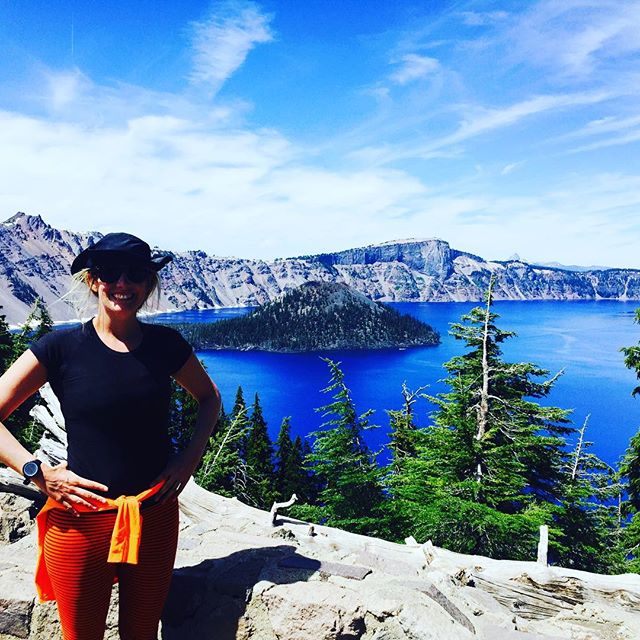
Something I found interesting on the trail is that you don’t go by your given name. I’m not sure why, but you don’t get to choose your trail name – it’s chosen for you by other hikers based on different traits or attributes. Once you have your name, you can’t change it. One day, I was wearing a blaze orange top and blaze orange pants, so I was called Pumpkin. And for rest of the hike, people referred to me as Pumpkin. They called me Pumpkin, I called myself Pumpkin – it became a part of me.

